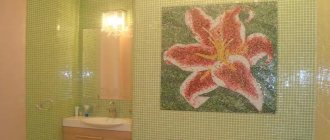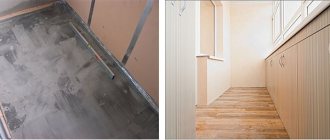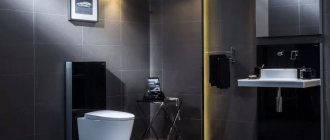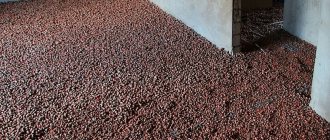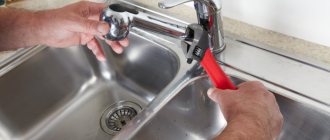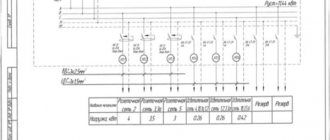This article is intended to help you lay parquet with your own hands, without resorting to the help of professionals.
Parquet will create an aesthetic perception only if it is installed correctly. Independent work takes place if you carefully prepare for the process - study the rules, prepare the foundation and the material itself. This article is intended to help you lay parquet flooring yourself, without resorting to the help of professionals.
Methods for laying parquet
On the screed
On the logs
On plywood
Instructions for independent work
Tools and materials
Preparation of parquet boards
Preparing the base (for all methods)
DIY parquet board installation
Puttying and grinding the surface
Primer and varnish
Conclusion
Types of installation
How is parquet board laid? Traditional laying with parallel stripes is called classical.
Classic laying of parquet boards
It remains popular because it does not require special skill - the slats have tongue-and-groove locking joints. All that remains is to connect the boards to each other, corresponding to the laying area.
Other types:
- French Christmas tree
- English Christmas tree
- Dutch styling
- Artistic parquet
Helpful information
Any technology that differs from the classical one requires an increase in the number of parquet boards - consumption increases up to 50%.
Installation nuances
Installation of parquet and its further operation requires fulfillment of certain technological requirements. This is due to the coating material. Parquet boards are made from different types of wood, the characteristics of which differ.
Good to know! Before wood becomes parquet, it undergoes several types of processing, but retains its natural characteristics. If the humidity in the room is constantly changing, the temperature is fluctuating, it is better not to make parquet flooring.
At high temperatures and low humidity, wood dries out. It deforms and becomes covered with cracks.
If there is a high level of humidity in a building, the parquet boards swell and change size. The appearance and attractiveness of the parquet deteriorates.
The best conditions for installing parquet boards are:
- temperature: +18-24 °C;
- humidity: 40-60%.
When it’s winter outside, you will have to humidify the indoor air with special devices. They will protect the parquet from drying out and the powerful impact on the coating of heating radiators.
Waterproofing and thermal insulation material is additionally laid under the plywood.
Options for laying parquet flooring
Parquet is laid on a base prepared in several ways: on a screed, on joists and on the subfloor surface. Before laying parquet boards correctly, it is important to find out the details:
On the screed
Laying parquet is possible only with a perfectly level base - otherwise the surface of the boards threatens to have significant differences and in the future the lamellas will fall out of their places due to loose joints. The moisture content of the base is also considered a significant disadvantage - laying parquet boards on a freshly prepared screed is prohibited.
It is important to meet the deadline, then measure the surface humidity with a special device and, after satisfactory data, begin work. This slows down repairs, especially if there is no other place to live.
On the logs
- The difference from the previous installation method is in the following advantages of the base: Possibility of laying insulation or communications in the box (only a water-based underfloor heating system is prohibited). Sound insulation qualities increase. The installation speed is high. The only negative is that this method of preparing the base does not allow for shaped laying of parquet.
On plywood
The advantage of this method is the ideal surface of the future parquet flooring. However, to achieve this result, careful work is required:
- High-quality tongue-and-groove, moisture-resistant wood is selected.
- The concrete floor is waterproofed.
- Each laid sheet of plywood is checked for level.
- Great attention is paid to fastening. Large gaps and bumpiness are prohibited.
- After laying the rough wooden floor, the entire surface is impregnated with special antiseptic and moisture-repellent agents.
All manipulations take a lot of time, but the result is worth it
Surface leveling (screed, joists)
If you do not want the service life of the flooring to be reduced, you must first level the floor surface before laying the parquet. This can be done in two ways: by making a new cement screed or by installing logs (wood boards). The quality of laying parquet flooring directly depends on the evenness of the base.
When leveling the surface using a screed, its minimum thickness should be 4 cm so that the dowels can be securely fastened to it. If initially there were significant slopes on the floor surface, then in those places the thickness of the screed will be greater. But the drying time will also increase, since for the four-centimeter one to be ready, you need to wait two months. And with every additional centimeter, the waiting time increases by a week.
Rushing in this is never allowed, since the screed must dry to the required humidity level of 3-4%. Otherwise, when laying parquet in advance, you risk that the floor will absorb excess moisture. As a result, this will lead to the fact that after some time the parquet will take on a wavy shape. You can independently evaluate the screed by scratching two intersecting lines on its surface - where they intersect, the cement should not crumble much.
And to make sure how smooth the surface is, just lay a two-meter-long board on the floor - deviations from the screed of a couple of millimeters are allowed. To ensure that the floor surface is perfectly flat, self-leveling mixtures are often used. Leveling the surface is especially important when laying block parquet with large planks, because After installation, unevenness will be more noticeable.
If long laying times for parquet are unacceptable for you, then you can go by installing logs. As already mentioned, logs are boards, not necessarily planed. In terms of size, it will be enough to use boards with a width of 8 to 10 cm, a thickness of 2.5 to 4 cm, most importantly, dried to a residual moisture content of less than 20%. In any case, it is advisable to place roofing felt under the logs to prevent them from rotting.
The boards are fastened to the base of the floor using post bolts. And then with their help, adjustment is made in the vertical direction (if necessary, they can be raised or lowered). One of the unacceptable mistakes when installing joists is too large a distance between them. Therefore, you should not skimp on boards, otherwise the parquet will inevitably sag. But installing the logs doesn’t take that much time. In a standard three-room apartment, this work will take no more than a day. Upon completion, sheets of plywood are laid on the joists.
Methods for laying parquet
This involves laying the parquet with your own hands to the base. There are 4 ways to do this:
Floating floor
Glue-free technology has gained popularity due to the speed of installation and the ability to dismantle coatings without damage, for example, if you decide to move or replace part of the parquet boards. Such lamellas have a mechanical lock - a tongue and groove, which allows you to connect the boards to each other with minimal gaps. Used in classic parquet installation.
Installation with glue
Connecting the planks into a tongue and groove + smearing the base and locks with glue loses its advantage in dismantling and further using the boards. However, it provides an airtight coating that prevents moisture from penetrating inside. It is important to purchase water-free glue, otherwise drying moisture will dismantle the parquet boards.
Fastening with self-tapping screws and glue
The most durable method is that all planks are securely reinforced on all sides. However, it will no longer be possible to dismantle the parquet.
We can only hope for a long service life.
Fastening with self-tapping screws
Typically, this method is typical for laying parquet on plywood.
The process of scraping parquet with your own hands
Sanding machines will help you quickly and efficiently sand a wooden surface. In addition to the equipment, you will need to purchase sandpaper No. 40 for roughing, No. 80 for finishing, No. 100, 120 for finishing sanding, as well as replacement discs for the unit and putty to eliminate defects. When scraping the floor using the hardware method, you must follow safety precautions. Before the procedure, it is necessary to check the quality of the electrical wiring.
For the best result, the machine must be driven smoothly and evenly across the entire floor, avoiding stopping in one place, otherwise you can remove too much of a layer and create a strong drop. Before starting work, the machine is raised, turned on and waited until the machine picks up speed. Then they lower it smoothly and begin grinding. For the machine, a special piece of sandpaper is used, which is threaded along the arrow indicated on the machine.
Related article: How to make a chair out of wood with your own hands?
When sanding parquet, you need to wear glasses and a mask, as a lot of fine dust is generated.
Scraping technology:
- It is necessary to install coarse sandpaper No. 40 into the machine and start the machine;
- Use a grinder to scrape hard-to-reach places under radiators and baseboards;
- Next, work is carried out from the far wall to a passable place;
- The dust collector is emptied as soon as the bag is full;
- Use an angle grinder to process the corners and remove the remaining small varnish stains;
- Putty is made, to which some parquet dust is mixed for color and chips and cracks are covered;
- After the putty has dried, the coating is treated with sandpaper No. 80 perpendicular to the first run.
- Next, the surface grinder is driven with 120 abrasive for finishing work.
After the work is completed, the surface of the wooden floor is covered with varnish or mastic.
Tools and materials
Regardless of the parquet laying technology, they are the same.
- Wooden hammer (mallet). Its blows are softer, unable to damage expensive parquet.
- Fasteners Depending on the method, you choose nails, glue, or install using built-in locks.
- Jigsaw. A thin blade will precisely highlight the desired area, unlike a hacksaw.
- Measuring tools – tape measure, square, level. Easily erasable markers are recommended - chemical ones will remain on the surface forever.
- Wooden wedges. They are required to maintain gaps during linear expansions between the board and the walls.
- Drill.
- Grinder machine.
If preliminary work with the base is required, then tools with materials for it are purchased: wooden beams, plywood, dry mixtures for screed. A hammer drill, usually a reinforcing mesh. Before working with parquet, the base should already be completely ready.
How to remove stains from parquet
With further use of the coating, stains may appear that cannot be washed with a damp cloth. To remove such stains, special means are used, but there are also traditional methods that are more gentle and no less effective.
How to remove stains from parquet
- A fresh blood stain can be removed with a cloth soaked in cold water. If the blood has dried, then a small amount of ammonia is added to the water and only then the rag is wetted.
- Black stripes from shoes can be easily removed with a nylon cloth - you just need to rub the surface a little.
- The wax stain is first frozen, then carefully cleaned off with a plastic spatula. A soft material is placed on the remaining wax and ironed.
- To remove chewing gum or paint, you can only use special cleaning products. In this case, it is important to read the instructions in advance, since amateur activities will lead to irreversible damage to the material.
How to remove stains from parquet - To remove nail polish, use a mixture of water and acetone.
Attention! It is unacceptable to use acetone in its pure form.
Parquet
For a more detailed introduction to the installation technology, watch the video below.
Parquet preparation
Before laying the parquet board yourself, the manipulations with the purchased coating are as follows: it is removed from the packaging and laid out on a horizontal surface. The boards are left for several days in a room where adaptation to the climate will take place. In the future, this will affect the better quality of the surface - it will not move or warp, the planks will calmly accept the established position. Next, a selection of parquet is made - boards with minimal defects are set aside, they will be used for trimming or inserting.
Concrete screed
If you decide to create a concrete screed, then after pouring you need to wait a few days. During this time, the base should dry out. The resulting base is primed and covered with an adhesive solution. Then plywood sheets are laid out on it.
To reduce stress, plywood is cut into squares (50-75 cm). They are laid out so that each row does not meet the previous one in the corners. A gap of 1 cm is left between the wall and the plywood. Between the squares - 3-4 mm.
Fix the plywood sheets with self-tapping screws. They are screwed in following special rules. The screw head is recessed into the plywood by 3 mm. After fixing all the squares, you need to wait a few days. The plywood will cure and return to its normal position. After this, you can install the parquet board.
Laying plywood on a screed
Preparing the base
Since the installation technology is different, the floor preparation is also different. For example:
- On concrete. The old screed is removed using a hammer drill. The floor is cleaned - perhaps using a vacuum cleaner - and primed for better adhesion with the new composition. For parquet flooring, two types of screeds are used - semi-dry (pre-primed with glue) and dry. This will allow you to start work in a maximum of a week or immediately, in the case of using a bulk composition. When mixing the solution classically, you need to wait a month, constantly measuring the humidity of the floor - it should be no more than 2%. Before laying the parquet, the screed is covered with waterproofing material.
- On the logs. Preliminary work with the base is similar. Then, in relation to the level, logs are installed - wooden beams with a cross-section of 2 cm and a width of 5 cm. The fastening step is every 10 cm, otherwise there is a risk of breaking the parquet board. The external ribs of the joists must be in the same plane - an important condition for the future position of the parquet. If desired, mineral insulation is placed in the formed boxes.
- The “plywood” method is simple, but will take more time. Plywood, similar to parquet boards, is cured and laid on prepared logs or waterproofing in a checkerboard pattern. There must be gaps, otherwise with linear expansion there is a risk of fracture, especially if the quality of the wood is questionable in terms of drying. Then the finished surface is scraped. Presented to your attention is the technology of laying parquet on plywood video.
The floating floor can be laid on any of the described bases. There is only one rule - this is a classic parquet board - not an artistic or modular parquet. Read more in the article “Types of parquet”.
Wood selection
For the manufacture of piece parquet, certain types of wood are used, which differ from each other in both technical characteristics and colors. The choice of material for the floor determines not only the color scheme, but also determines the service life of the coating. Most often used for its production:
- Oak. Oak parquet is a classic option. This type of wood has excellent strength and solidity, and has a sufficient number of color shades. The only drawback is the fact that oak flooring can darken over time, acquiring an equally fashionable shade, which in design is called “aged oak.”
- Ash. The Brinell hardness characteristic of this species is even slightly higher than that of oak. The pattern is more pronounced and the shade is slightly lighter.
- Beech. This material is comparable in strength to oak. This wood has a soft yellowish tint. When choosing beech parquet, you need to pay attention to the fact that it is quite capricious - it reacts to moisture and sudden changes in temperature, deforming and losing its appearance.
- Maple. Maple parquet has a pleasant light shade, which is very attractive to designers. Unfortunately, if not properly cared for, maple parquet may darken slightly over time, so choose it with caution. At the same time, the material has a huge advantage - it is very reliable and durable.
- Cherry. If you need coating at an affordable cost, then this is cherry parquet. It has less hardness than oak and beech, but it is easy to process, has a pleasant shade, and the work on its processing is less complicated.
- Merbau. This is an exotic type of wood, it is valued for its huge selection of colors, many design options, and excellent moisture resistance. Despite its advantages, the material is very difficult to process because it contains a lot of oily substances.
Installation of piece and modular parquet
So, the base and boards for laying are ready. Materials and tools were purchased. You can start laying parquet. The instructions are as follows:
It is required to draw up a plan on paper indicating the markings of individual planks and actual dimensions. So, it’s easier to navigate on a plane.
They immediately decide whether the method will be adhesive or floating.
Regardless of the type of installation - herringbone, classic - the first parquet board is laid in the far corner of the room. A wooden wedge is installed between it and the wall. A tight fit is prohibited, otherwise the entire canvas will be deformed.
In the glueless method, the planks are inserted into one another, forming an angle or continuing a row. Working with glue involves coating the locking mechanism of all lamellas and the required layer on the base before laying the parquet board. The elements are driven together with a mallet.
You cannot immediately cut parquet according to a specific pattern. There is a risk of making a mistake. It is better to carefully measure each parquet board. If the work is tiring, there is always the opportunity to order a service from professionals.
Work continues until the entire area is covered. After this, the wooden wedges are removed.
Moisture-resistant plywood is an essential component of a multi-layer parquet cake
In the multi-layer construction of a parquet floor, an important mandatory component is moisture-resistant plywood. Its conclusion does not depend on the type of base and the selected floor design. In addition to the work that consists of forming a connection between dissimilar materials (wood and concrete), it is also assigned a number of important functions:
Moisture-resistant plywood is used when laying parquet according to any of the existing technological schemes
- protection of the parquet floor from possible shrinkage deformations;
- preventing the separation of elements, which often occurs due to the destruction of the upper layers of the cement base if the block parquet was laid directly on the screed;
- ensuring the strength of the foundation;
- perfect alignment;
- increase in thermal characteristics.
The thickness of waterproof plywood, which is used to construct block parquet, is calculated using a simple formula. Subtract 5 cm from the thickness of the planks. The resulting difference is equal to the thickness of the plywood sheets. However, experienced parquet floor installers do not recommend using plywood less than 12 mm thick.
Putty and sanding of parquet
During operation, the parquet board gets damaged, especially if the quality is low or average (see price and quality table). Therefore, it is important to bring the finished surface into perfect condition. To do this, prepare putty (wood dust and glue) and cover joints, cracks, and possible chips with it.
All that remains is to sand the entire area of the finished parquet.
Using a special machine, the procedure will go quickly. In the absence of it, they use coarse and fine-grained sandpaper. The first time they remove all the unevenness, the second time they polish it.
How is surface puttying performed?
The wooden surface is leveled in the same way as other materials, the technology is no different.
At the first stage, the following are aligned:
- seams;
- cracks;
- unevenness.
The work is carried out with a rubber spatula. After applying the composition, you need to wait and let it dry. Then the treated areas are cleaned with sandpaper and dust is removed from the surface.
Only moisture-resistant plywood sheets can be puttied.
Priming and varnishing - the final stage
The choice of varnish depends on the desired effect. Glossy will emphasize the beauty of the design, matte will mute the intensity. Before opening the area with varnish, the surface is vacuumed and a primer is applied. This way, the varnish will lie flat. It is applied in several layers - from 3 to 9. Each layer is allowed to absorb for a day.
The varnish is left to dry in absolute calm - you cannot open windows, doors, or turn on ventilation.
Prices for parquet work
The cost of installing parquet flooring largely depends on the chosen material and installation method. For example, installation of artistic parquet or with a complex pattern will differ significantly in price from a simple deck look. The final estimate for the work is calculated directly by the paver when arriving at the site.
Of course, piece parquet flooring is the leader of all floor coverings; with its help you can emphasize the advantages of a room and hide the disadvantages. The high quality of the material ensures durability, and the impeccable appearance will give the room a flawless and sophisticated look.
Solid wood parquet production technology
This type of parquet is considered to be the most common today. It is made as follows:
- Hardwood logs are cut into planks.
- The blanks are calibrated by approximate size.
- Next, the boards are sent to a drying chamber, where they are brought to a humidity of 9%.
- The dried workpieces are recalibrated on milling machines. The most modern production facilities use high-precision laser equipment.
- At this stage, the ends of the future parquet are milled.
- The treated boards are sanded, polished and sorted.
- The last stage is the treatment of finished elements with a protective coating. Some types of solid parquet boards are covered with 7-10 layers of varnish.
The technology may vary slightly among different manufacturers, but the general principle looks as described above.
What to glue
Now there is a huge selection of adhesives on the market. The most inexpensive is dispersion glue, it hardens quite quickly, but it is better not to use it for exotic wood species, but it is ideal for solid oak.
Solvent-based adhesives are good for installing parquet yourself. It is also recommended to lay artistic parquet using this glue. The setting time is quite long, so all installation defects can be corrected within half an hour.
The new generation adhesive is a two-component polyurethane composition and a reactive setting one-component adhesive. Very strong and reliable adhesives, good for expensive parquet, especially for exotic ones. The glue should be used with caution, strictly according to the instructions. It greatly speeds up the process of installing floors; sanding can be done within 24 hours.
At one time, parquet flooring was actively glued using PVA glue, but over time it became obvious that this composition was not suitable, it could not withstand the constant work of wood through compression and expansion.
Brushed parquet boards - what is it?
At home, you can also make so-called brushed parquet . This is one of the new technologies for creating artificially aged floors. The material undergoes special processing, during which it acquires an original appearance. By the way, this processing method can significantly increase the service life of the parquet base.
Parquet board Goodwin American Walnut Edinburgh, embossed, brushed
Aging of wood occurs through treatment with a hard metal brush, which removes the soft fibers of the boards, while the hard ones remain in place. This way, the textures on the wood will be clearly visible, and if you cover them with oil, the natural beauty will become clearly visible.
After the soft wood fibers are removed, the boards are covered with a patina (special paint), which helps make the wood structure more obvious, emphasizes its porosity, or other materials. Also, the boards can be tinted - that is, the wood will change its color by a couple of tones. Usually it becomes somewhat darker than it was. Wood can be coated with varnish, wax or oil.
Brushed wood floor
Laying laminate flooring on an uneven wooden floor, useful tips
If your wood floor is uneven, there are several ways to lay laminate flooring on it.
Using a substrate that levels the base. It is important to understand that there is not a single substrate that will make the surface perfectly flat.
Laying laminate
If the differences on each meter of the floor are a maximum of 5 mm, then the underlay will be able to compensate for such unevenness, and there is no need to adjust the base.
For example, a polyethylene foam backing with a thickness of 2 mm can level floors whose unevenness amounts to a maximum of 1 millimeter.
The most effective ISOPLAAT underlays, with a thickness of 12 millimeters, can compensate for floor unevenness up to 5 millimeters per linear meter of the base.
Special wood-fiber substrates “Quiet Run” have similar abilities.
Leveling the base
If the substrate cannot cope with unevenness, you will have to resort to leveling the base.
If the floors are concrete and there are a lot of potholes, cracks and chips on them, the first step is to repair these defects with ordinary cement mortar.
After this, the base is primed to improve adhesion, then the floors are leveled using a cement screed.
You can purchase either a ready-made composition in the store, or prepare a mixture with your own hands from sand and cement, in a ratio of three to one. Construction stores sell quite expensive but very easy-to-use self-leveling compounds. After the screed has hardened, the installation of wooden dies begins.
And if you need to level a wooden floor, first of all, use self-tapping screws to fix all the areas that sag, after which they perform the procedure of scraping or grinding with a special power tool.
After grinding, the surface is primed and puttied according to the building level and rules, for maximum leveling.
Leveling the base with plywood
But if it is impossible to level a very crooked floor, then lay plywood sheets or OSB boards up to 2 cm thick.
What people want to know about parquet
Standards for parquet in Europe and Russia
In Europe, parquet production is regulated by EN - 13489, in Russia it is GOST 862.3-86.
Parquet structure
It is worth mentioning right away that parquet consists of three layers of wood and its structure resembles ordinary plywood. Three-layer parquet is not produced by chance; it is this structure that allows it to be the most stable and stable. It is this structure that allows the use of a minimum amount of valuable wood. So, standard parquet consists of the following layers:
- The first layer is coniferous wood veneer, its task is to stabilize the structure. The thickness of the veneer is about 2 mm.
- The second layer consists of soft wood (pine or spruce), the function of the middle layer is the load-bearing part of the parquet. The thickness of this layer is 9 mm. Wood that has not passed through the third layer due to its properties is also often used.
- The third layer is valuable wood. As we already understood, it is she who is the front one. The most common species for the top layer are oak, walnut, ash, jatoba, beech, pear, cherry, birch and bamboo; manufacturers do not stop and experiment a lot, constantly creating new design solutions and using new wood species. Thickness up to 5 mm.
Oak and parquet made from it. Oak is the most common wood for parquet production...
Ash wood and parquet...
Walnut parquet…
- But valuable wood can wear out and wear out very quickly without additional treatments and coatings. That is why it is coated with a specialized varnish several times. We will talk about the composition of the varnish below.
What is a substrate, is it necessary to use it?
The underlay is a sheet or roll material that is placed directly under the parquet.
Today, different types of substrates are made:
- from foil materials;
- cork, as well as cork with the addition of bitumen or rubber;
- polyethylene foam;
- polypropylene.
Each of these varieties has its own characteristics, characteristics, pros and cons.
But is it necessary to use a substrate at all?
This material is needed when parquet floors are laid using the floating method, and not with an adhesive composition; the underlay is required for the following purposes:
- reduces or evens out small unevenness in wooden floors;
- serves as a shock-absorbing layer;
- minimizes noise and shock generated while walking;
- makes the floor warmer;
- protects the floor below from the penetration of moisture from the room, as well as from the appearance of backlash.
Some people think that it is better to purchase a thick underlay, supposedly this will soften walking on the parquet.
However, if you choose a substrate that is too thick and lay it on an uneven floor, then after a while difficulties will arise with the parquet locks, creaking will occur and the material will begin to wear out quickly.
Experts say that the optimal thickness of the substrate is 2 millimeters.
It is important to remember that the underlay will not be able to level out any unevenness of the floor surface, this material repeats any differences and defects in wooden bases, therefore, before laying the underlay, it is important to level the surface as much as possible, for example, with a gypsum compound, a special mixture or plywood.
There is absolutely no difference whether you buy the substrate in sheets or in rolls.
Let's watch a video about which underlay is best to use under parquet boards and laminate:
How to lay plywood
Plywood usually has a format of 1500 * 1500 mm, its thickness for the parquet substrate should not be less than 2/3 of the thickness of the die, it is recommended to use sheets of at least 12 mm thick.
How to put
The plywood base under the parquet is laid according to the bricklaying method, the seams of the previous row must be covered by a whole part of the plywood of the next row. There must be a technical gap of at least 5 mm between the sheets, which are filled with sealant. Along the perimeter it is also necessary to leave a distance from the walls to the substrate, a gap of 10-20 mm wide.
Wood is a living material, so it is necessary to leave a gap around the perimeter
To saw or not to saw – that is the question
There is a constant debate between professionals and craftsmen regarding the question: to saw or not to saw plywood for a substrate? Reviews from home craftsmen read: “Don’t cut! Talk about some kind of internal tension is empty, the sheet is already small, and even more so as a single piece, the shortcomings of the screed are better smoothed out, fewer seams – fewer problems!”
Experts fundamentally disagree with such arguments; firstly, no one has repealed the laws of physics, and secondly, it’s all about changing the humidity of the room. If there is suddenly dampness, and such a development of events cannot be ruled out, then smaller pieces of plywood will warp less, which means that deformation of the parquet can be avoided. Large sheets can curl up like a helicopter, and consider that all the work is in vain; you will have to re-lay the parquet.
Thus, whether or not to saw the plywood is up to you to decide, but to make the underlay for the parquet more reliable, cut the sheets into 4 parts.
What to attach to
Plywood is usually laid with a one-component adhesive, and also with dowel-nails for adhesive strength. The adhesive is applied with a notched trowel, the plywood is pressed tightly to the base, then drilled into dowels; if the fragments are cut, then 4 pieces are enough. in the corners, and 4 pcs. between them.
It is better to take screws No. 8, galvanized, immediately complete with a dowel. Hats should be recessed by 2-3 mm.
The rules for laying plywood are the same as for brickwork.
An important touch
No matter how smoothly and neatly the substrate is laid out, there will still be height differences at the joints. Be sure to go over the seams with a sander to get as even a surface as possible.
